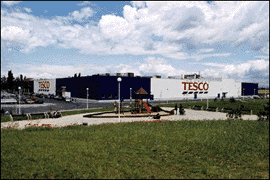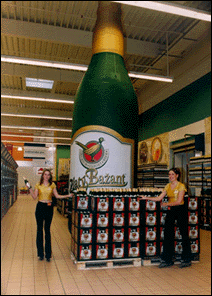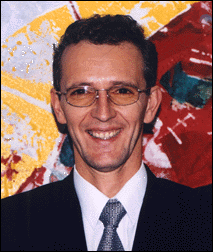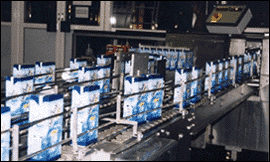 FOOD & BEVERAGE FOOD & BEVERAGE |
 THE CONSUMER MARKET THE CONSUMER MARKET |

Food products including tobacco and cigarettes account for one third of all typical Slovak household expenditures. However, this figure does not include the general public consumption. The food industry share in the GDP remains at 4%. While baked goods, vegetable oils and fish processing companies generate significant profits; whilst sugar, poultry and meat processing companies have negative revenues.
In recent years, the extensive import of foodstuffs and beverages affected productivity in the domestic Slovak food market.

Therefore, many domestic producers began to work with foreign companies and managed to reduce foreign competition and increase their own production levels. Slovakia has benefited from one major advantage: the ability to offer a cheap labor force to foreign investors who have played an important role in the Slovak food processing industry.
Foreign joint ventures provide effective protection against liquidation and are also a way of resolving problems associated with import quotas.

For example, import quotas do not apply to the beer produced in Slovakia. Alternatively, foreign breweries can transfer large manufacturing sites to neighboring countries. For instance, Heineken manufactures the most famous Slovak beer, Zlaty bazant in Poland. Results of the restructuring and concentration process are mostly visible within dairy and brewery industries.

"I would like to emphasize on the fact that
we have a very good experience with our employees,
they are very flexible, willing to learn and able
to work hard," says Mr.
Ivan Stefanec, Managing Director of Coca-Cola Beverages
Slovakia. |

"We have a very good team who is hard working, and even seven days a week if needed. The young generation in this country is absolutely wonderful," adds Mr. Jean Paul Van Hollebeke, CEO of Heineken Slovakia.
The advantage of having a cheap and qualified labor is however counterbalanced by its weak purchasing power. Therefore, price is the most important factor for the Slovak consumer. The quick expansion of shopping centers throughout Slovakia creates further competition and ultimately reduces the price of food for consumers.
This competition has an inadvertent effect upon the efficiency and profitability of the Slovak market as it increases pressure for restructuring domestic food manufacturing processes.
Both the world's largest non-alcoholic beverages producers - Coca-Cola and Pepsi Cola - are present in the Slovak market. Although Pepsi has been in Slovakia since the 1970s when Coca-Cola only entered Slovakia in 1993, the latter soon became the market leader. "We saw it as a significant challenge to introduce the Coca-Cola culture, and we believe that our results are the evidence that we are doing well," stressed Mr. Stefanec. Coca-Cola invested over SKK 3,5 billion in Slovakia and its significant production capacities enable them to supply neighboring countries. Altogether, there are over one hundred local companies competing in the Slovak soft drinks market. The production of these beverages is steadily increasing and the average consumption is similar to Italy or France.
In general, the Slovak public prefers wine rather than beer. However in comparison with the adjacent Czechs who have been proclaimed to be the largest beer consumers in the world the average consumption of beer in Slovakia appears to be lower than average. Dozens of brands, mainly from local microbreweries, can be found across the country.

The two giants, Heineken Slovakia and Saris, supported by SAB the South African owner of some famous Czech brands, dominate the Slovak beer market. Their aggressive marketing and price wars reduce the prospects for domestic beer producers to break into the Slovak market. Beer production in Slovakia is declining as import quotas from the Czech Republic are in the process of being abolished. However, successful business strategies still offer a great amount of opportunities. "In five years, we increased our market share from 8 % to 42 %, of course due to our new acquisitions and our increasing portfolio of brands," states Mr. Van Hollebeke from Heineken.
Although the name "Viticulture" is not the most recognized tradition within the Slovak agriculture, it has its importance. It is known for its rich traditions and particularly high quality wines that come from several regional vineyards. Wine growing and winemaking are also of historic importance for Slovakia. Some Slovak wines can be compared to the finest French products that not only excite the palate of wine connoisseurs but also bring delight to the average consumer. There are three main wine regions in Slovakia: a large region to the southwest, on the Hungarian plain, a smaller region between Bratislava and Trnava, and the eastern Tokay region near Mala Trna. Viticulture and wine making records have shown a gradual decline over the last ten years and have now fallen under the level of self-sufficiency. Another problem is the sharing of the sector between primary producers and processing companies, which lack common development objectives and interests. The wine processing industry has been surviving in the form of high capacity regional centers for the manufacturing and distribution of wine. Approximately 60 % of all companies related to wine production operate in wine processing, not in the primary production. |

